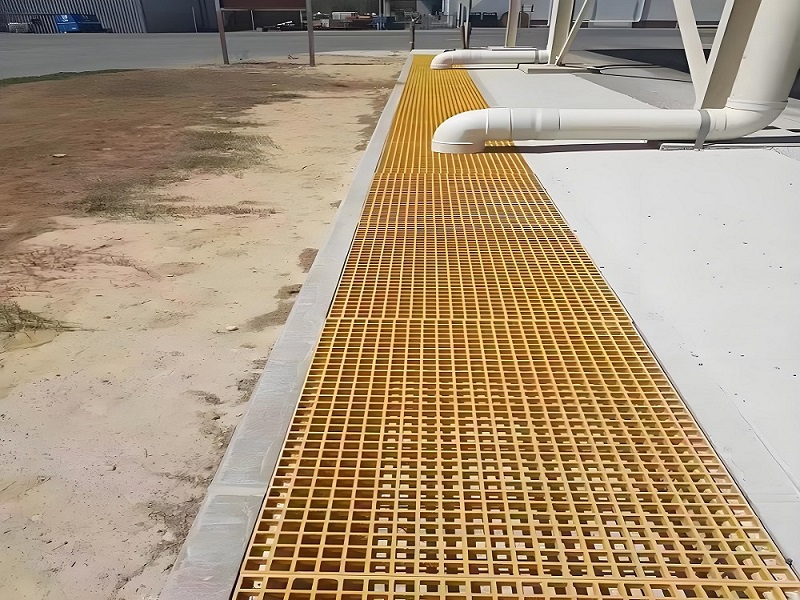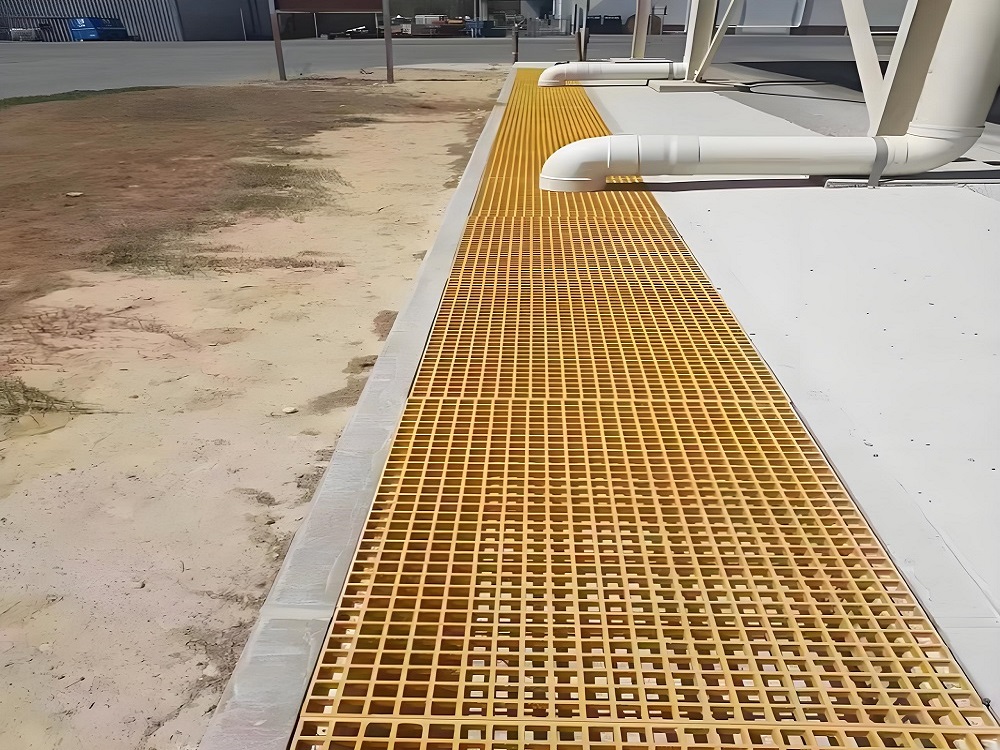
how much weight can fiberglass grating walkway hold
When it comes to the question “how much weight can fiberglass grating walkway hold”, the answer mainly depends on four factors:
The span (width of installation) – the narrower the span, the higher the load capacity; the wider the span, the lower the load.
The thickness of the grating – thicker panels can carry more weight.
The choice of resin – for example, vinyl ester resin has higher strength. If you’re looking for both heavy load capacity and good corrosion resistance, fiberglass gratings made with vinyl ester are a solid choice.
The type of grating – there are pultruded and molded types. Pultruded gratings use I-beam or rectangular load bars with high fiber content and continuous fibers along the length, which makes them stronger and stiffer than molded gratings of the same thickness. They’re better for larger spans and heavier loads. Molded gratings, on the other hand, are more corrosion resistant and easier to cut, but have lower load capacity for the same thickness.

Other factors also affect load capacity:
Temperature – higher temperatures reduce strength.
The type of chemical environment – strong corrosive liquids or gases can weaken the grating.
Cross-sectional geometry and thickness.
Fiber orientation – pultruded gratings have more fibers in the load direction, which gives better performance in that direction. Installation should always align load bars with the main load direction.
Open area – higher open area (larger mesh openings) means lower load capacity.
Here’s an example for reference: suppose a chemical plant has a wastewater trench that needs fiberglass grating. The trench is 50 cm wide, and the environment contains sulfide gas (usually H₂S or sulfurous acidic atmosphere). The load type is uniform distribution.
Our recommendation in this case would be:
Resin: Vinyl ester (reason: in acidic, sulfurous, and hot/wet environments, vinyl ester maintains strength, creep resistance, and chemical durability much better than general-purpose polyester resins, ensuring long-term stability).
Type: Prefer pultruded gratings; if cost is the main concern and the load is moderate, thick molded gratings can also work.
Size: 38 × 38 mm mesh (~68% open area) with 38 mm thickness.
Application: pedestrian use and moderate surface load (~3–5 kPa). If the load is lighter, 30 mm thickness might be acceptable, but deflection should be checked first.
With these specs, the load capacity is around 435 kg/m². To put that into perspective, that’s about 5.4 adults per square meter (assuming 80 kg per person).
So, when choosing fiberglass grating, the question “how much weight can fiberglass grating walkway hold” really depends on a mix of environment, materials, and product type. Henry fiberglass has years of experience in producing fiberglass gratings, using high-quality raw materials at reasonable prices, and serving customers worldwide. If you have any questions or requirements, feel free to reach out to us—we’ll be happy to help and provide a quote.




